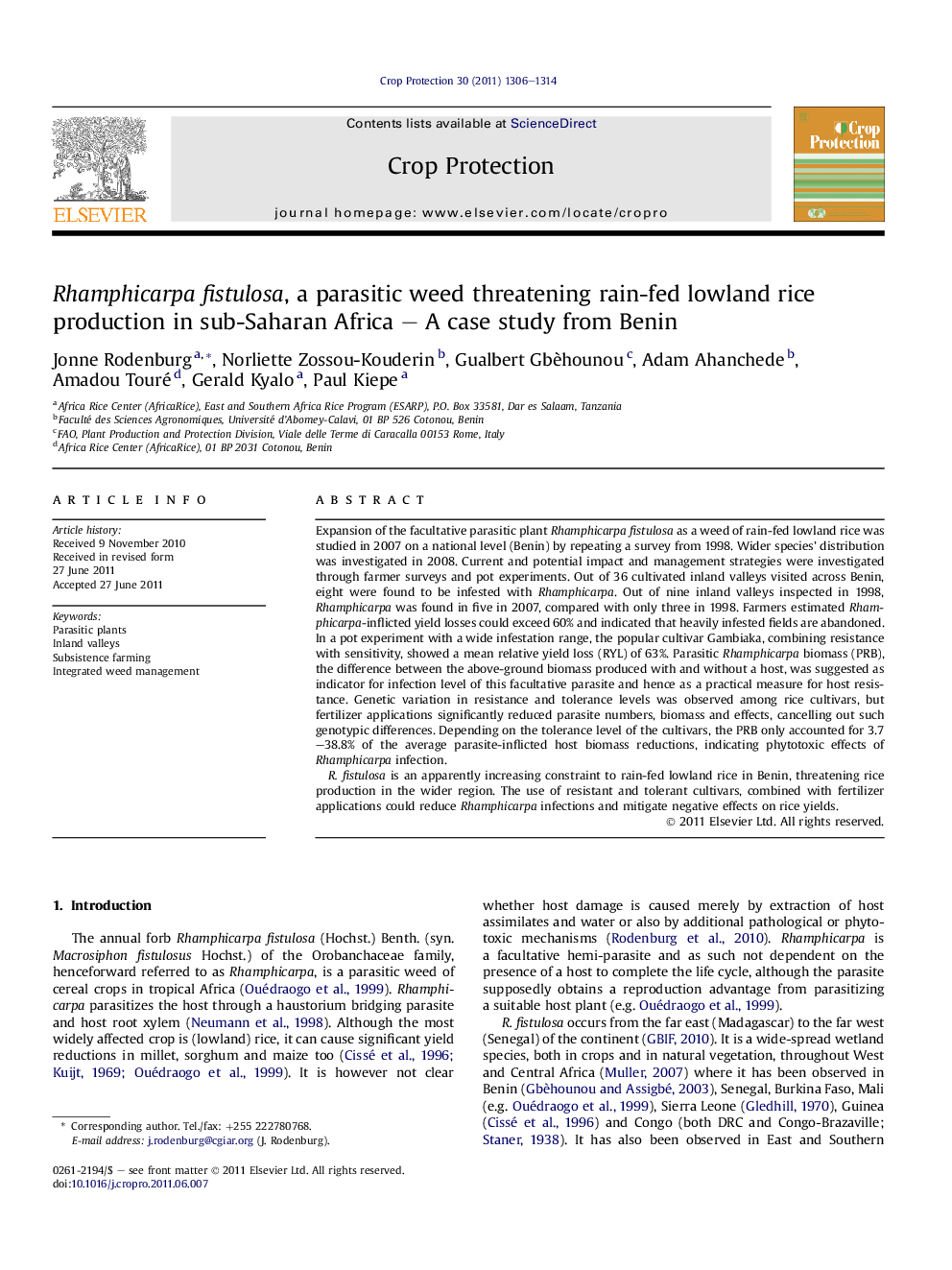| کد مقاله | کد نشریه | سال انتشار | مقاله انگلیسی | نسخه تمام متن |
|---|---|---|---|---|
| 4506569 | 1321320 | 2011 | 9 صفحه PDF | دانلود رایگان |

Expansion of the facultative parasitic plant Rhamphicarpa fistulosa as a weed of rain-fed lowland rice was studied in 2007 on a national level (Benin) by repeating a survey from 1998. Wider species’ distribution was investigated in 2008. Current and potential impact and management strategies were investigated through farmer surveys and pot experiments. Out of 36 cultivated inland valleys visited across Benin, eight were found to be infested with Rhamphicarpa. Out of nine inland valleys inspected in 1998, Rhamphicarpa was found in five in 2007, compared with only three in 1998. Farmers estimated Rhamphicarpa-inflicted yield losses could exceed 60% and indicated that heavily infested fields are abandoned. In a pot experiment with a wide infestation range, the popular cultivar Gambiaka, combining resistance with sensitivity, showed a mean relative yield loss (RYL) of 63%. Parasitic Rhamphicarpa biomass (PRB), the difference between the above-ground biomass produced with and without a host, was suggested as indicator for infection level of this facultative parasite and hence as a practical measure for host resistance. Genetic variation in resistance and tolerance levels was observed among rice cultivars, but fertilizer applications significantly reduced parasite numbers, biomass and effects, cancelling out such genotypic differences. Depending on the tolerance level of the cultivars, the PRB only accounted for 3.7–38.8% of the average parasite-inflicted host biomass reductions, indicating phytotoxic effects of Rhamphicarpa infection.R. fistulosa is an apparently increasing constraint to rain-fed lowland rice in Benin, threatening rice production in the wider region. The use of resistant and tolerant cultivars, combined with fertilizer applications could reduce Rhamphicarpa infections and mitigate negative effects on rice yields.
► Rhamphicarpa expands as a weed in rain-fed lowland rice.
► Farmers estimated Rhamphicarpa-inflicted yield losses to be at least 60%.
► Validity of farmers’ yield loss estimations (>60%) is confirmed by pot experiments.
► Host cultivar and fertilizer level determine degree of infection and damage.
► Host biomass loss exceeds parasitic biomass, indicating phytotoxic effects.
Journal: Crop Protection - Volume 30, Issue 10, October 2011, Pages 1306–1314